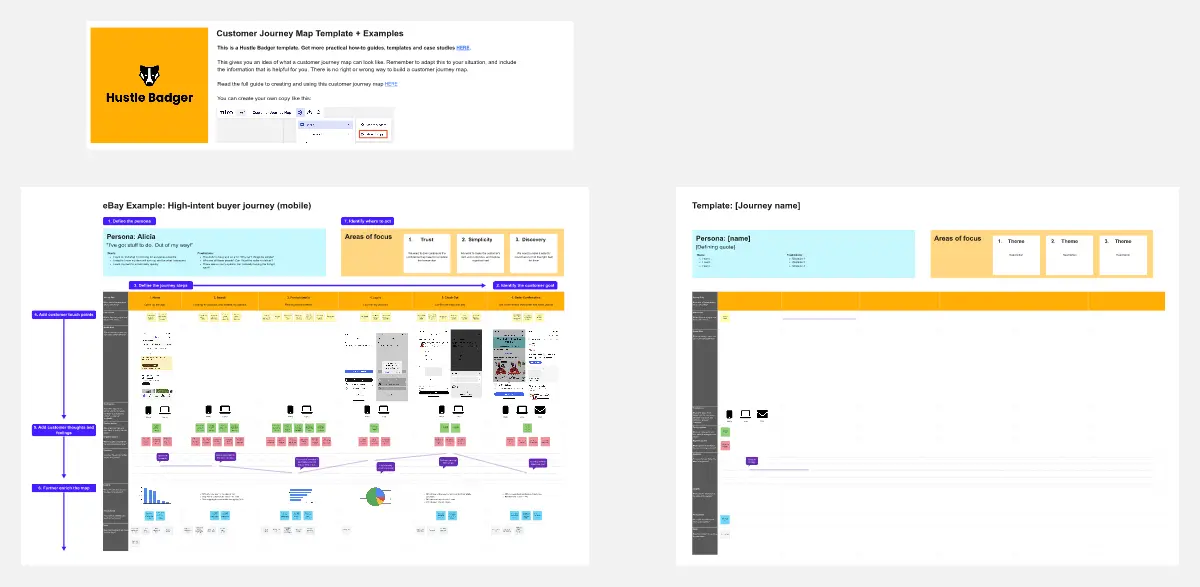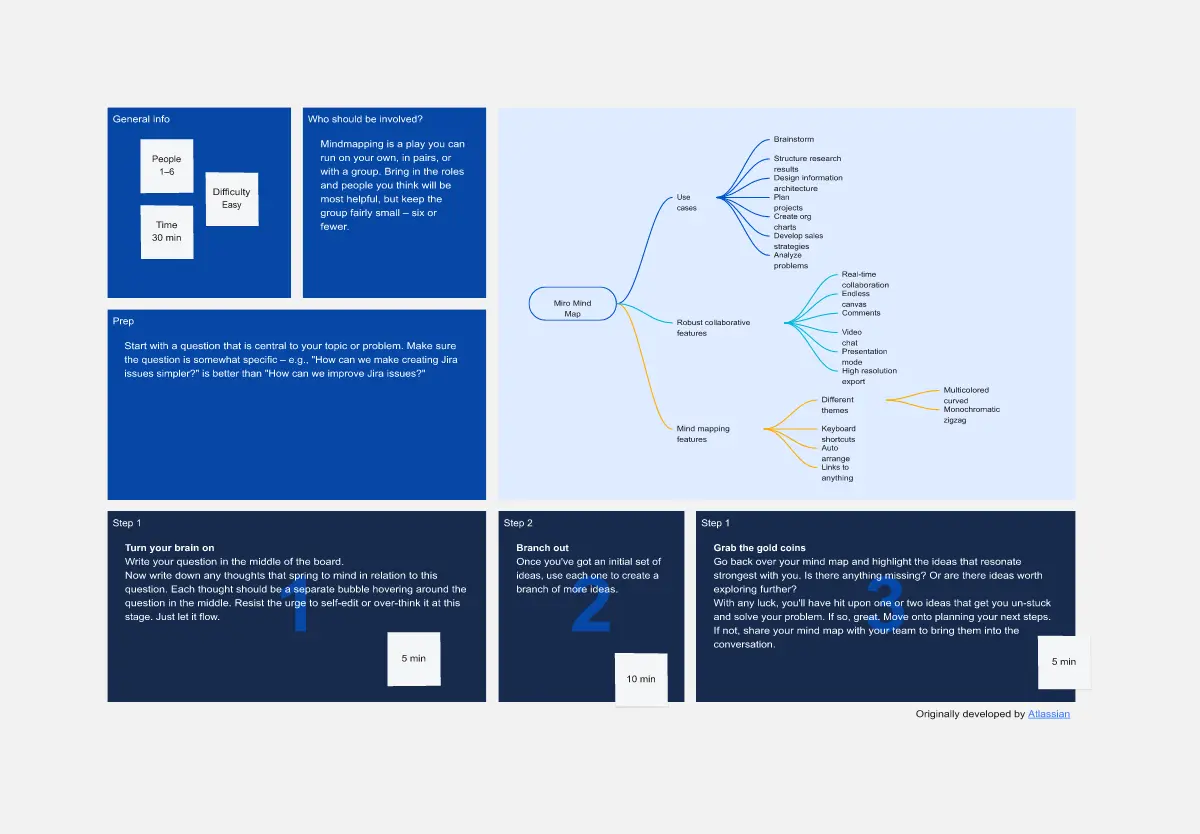Opportunity Solution Trees (OSTs) are a visual way of mapping strategy and discovery.
They have four levels:
1. Outcome you want
2. Opportunities to reach this outcome
3. Solutions to realize each opportunity
4. Assumption tests to increase confidence in each solution
This is a Hustle Badger template.
Read the full guide here: https://www.hustlebadger.com/what-do-product-teams-do/how-to-build-an-opportunity-solution-tree/
Outcome
We like to use a combination of mission + metrics to define an outcome:
Mission – an inspiring statement about what you’re trying to achieve. You can often interpret this as your purpose.
Metrics – how you’ll know whether you’ve achieved your mission. The metrics should be the measurement of the mission, not the definition of it. A good format is: Move [metric] from [baseline] to [target] by [date]
Opportunities
The areas you can focus on to deliver impact. Opportunities are often customer problems and have multiple potential solutions.
Mapping Opportunities
1. User interviews – speaking directly to users
2.Behavioral analysis - exploring the data you have
3. Process mapping - visualizing processes and systems
4.Subject matter experts - speak to people who know the space well
Prioritizing Opportunities
1. Opportunity sizing -impact modeling
2. Customer factors - assessing incidence and severity
3. Company factors - wider business context and strategy
4. Market factors - how you want to position against competitors
Solutions
The features you might ship to generate impact. Good solutions come from:
A well-defined problem
* Objective - clear definition of success
* Diagnosis - we know what’s going wrong
* Context - we understand the user and business
mixed with
Good inspiration
* Direct competitors
*Cross-industry references
* Abstract inspiration - art, architecture, nature, etc.
Good solutions are
* Diverse - broad range of options to choose between
* Useful - create user value
* Impactful - generate business value
Assumptions
The risks that threaten you delivering impact. Assessing these helps you prioritize discovery. There are four types of risk:
1. Value risk
Does the customer really want this? Would they pay for it? Will this change user behavior significantly?
2. Business risk
Can the business deliver this? Does it create operational complexity? Is this legal?
3. Technical risk
Can we build this? Is it scalable, secure, and reliable?
4. Usability risk
Can users understand this? Do they know how it works?






